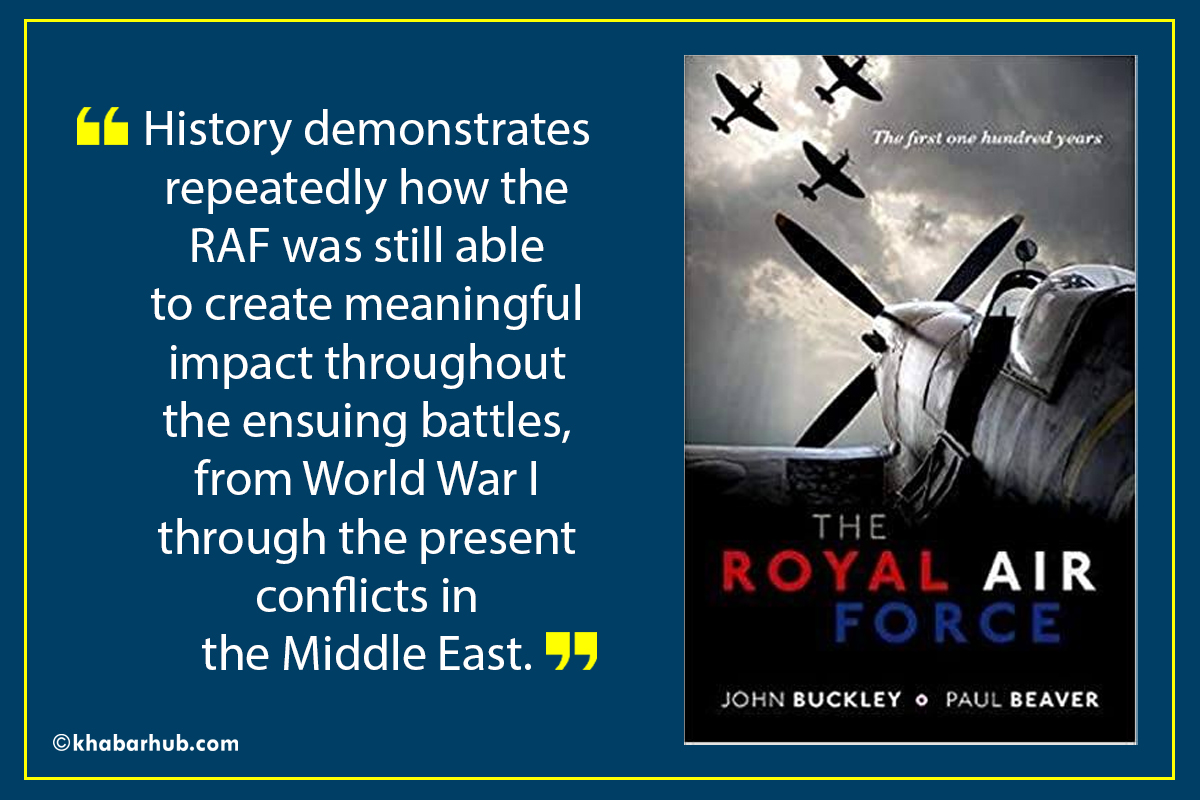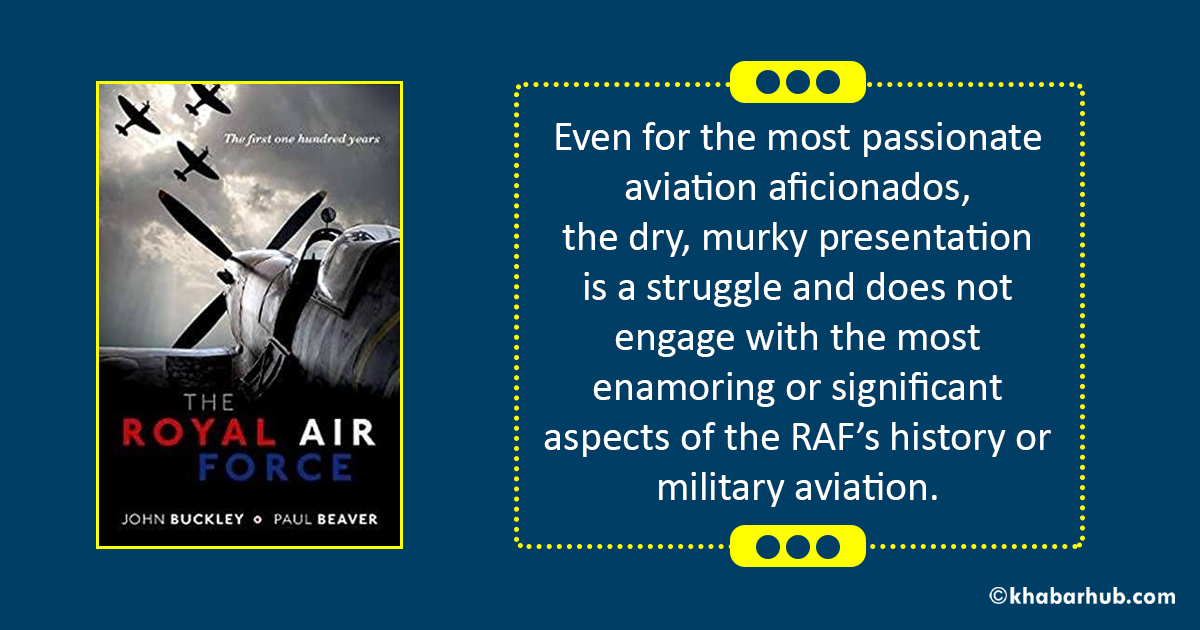With the rapid advent of the United States Space Force, the rise of remotely piloted aircraft, and the development of a potentially crippling pilot shortage, the impact of airpower has become a critical topic as nations prepare to face advancing threats.
As such, reflection is warranted; there is an opportunity to learn from airpower’s history the ways in which nations overcame arguably worse setbacks and disadvantages than currently presented.
Furthermore, broadening the understanding of how pilots have been trained throughout history could provide invaluable insight as companies and militaries continue to search for faster, more comprehensive methods of training.
Perhaps more importantly, in returning to the inception of airpower there exists the potential for some much-needed inspiration for the next generation of aviators.
To prove the RAF’s vital contributions, its history is presented chronologically, identifying the major events and individuals impacting the employment and development of the branch, starting from its creation during World War I.
Such reflection is attempted by Buckley and Beaver as they research the place of airpower in the defense of the United Kingdom and its allies, specifically through a review of the Royal Air Force (RAF) from inception to present.
The authors identify the themes of the history as technology, finance, strategy, and personnel, which they assert to be the most important aspect of the RAF’s success, and ultimately use these themes to establish the RAF as having a critical role in military aviation’s past and future.

To prove the RAF’s vital contributions, its history is presented chronologically, identifying the major events and individuals impacting the employment and development of the branch, starting from its creation during World War I.
The fiscal and political battles fought by the fledgling branch are supported by limited statistics on the manufacturing outputs and asset availabilities, as well as some comparative costs for policy deals made early in the development of the RAF.
The formative policies and national strategies are compared to demonstrate the limitations that initially and ultimately continue to counteract the desired rapid technological advancement and tactical employment of the RAF.
Despite these constraints, the history demonstrates repeatedly how the RAF was still able to create meaningful impact throughout the ensuing battles, from World War I through the present conflicts in the Middle East.
Ultimately, Buckley and Beaver conclude that the RAF has been transformative for not only the United Kingdom’s national defense strategy but for the rest of the world’s strategy development as well.
While the chronology of events and major players provides a relatively comprehensive view of the RAF’s history, it fails to engage with the key element that the authors identify as driving public interest in the topic: the romanticism, heroism, and individualism of military flying.
The foreword provides a promising start, if the reader overlooks the initial statement that inherently disregards half of the potential readership: “All small boys have dreams.”
Despite the divisive start, the foreword highlights the passion and sense of adventure associated with flight, and the introduction provides some examples of the RAF’s transformative effects on gender and racial equality throughout its development, but outside of the introduction, the evidence of societal impact is limited.
The book presents a policy history that is supported by its listed sources: primarily strategic articles and other similarly impersonal histories.
While well-researched on events and politics, there are very few personal accounts from members of the RAF, and rarer still are sources directly from RAF aviators.
Throughout the entire book there is a resounding lack of any meaningful recount of aerial engagements.
The only other references to the personnel that the authors state to be the key to understanding the RAF’s history are those at the highest levels of strategy or the comments on the general public’s possible psychological response to associated aerial events.
If the authors had illuminated on some of the social history of the RAF, the book would have more clearly exemplified their assertion that it is the heroism of the personnel that has been the bedrock of the British aerial military branch.
The top-down history presented in the book ultimately fails to capture the spirit and character of the RAF.
With regards to the psychological analysis, the book is plagued by assertions at times so vague or biased that it dangerously flirts with inaccuracy.
From the first major revelation that the RAF was the world’s first aerial military branch, the authors become unreliable as they simultaneously make a note clarifying that the RAF was in fact the second aerial military branch to be created.
The authors further frustrate readers with the book’s inconsistent assumptions on the knowledge base of the reader and the convoluted historical tangents.
In the discussion of the RAF’s role in World War II, the authors greatly misconstrue the weaknesses of the German Luftwaffe, especially in the comparison of what they refer to as the Luftwaffe’s “more obsolete” aircraft, which does a great injustice to the comparison of the Spitfire and Focke-Wulf FW 190.
In fact, this would have presented an opportunity to discuss comparative energy–maneuverability diagrams of the aircraft as a demonstration of technology’s impact on the developing branch and provide data corresponding to the role of the aircrew versus the advancements of their equipment.
Buckley and Beaver provide an overview of the major historical points of significance in the history of the Royal Air Force, and audiences looking for a broad (albeit biased) understanding of the RAF’s last 100 years may be satisfied.
Many of the conclusions discussed as to the RAF’s role in battles lack concrete data regarding actual impact and instead seem more glossed opinion than factual recounting.
This is furthered by the use of policy decisions to explain the RAF’s constraints, as these policies often lack any discussion of the underpinning concerns or misinformation such that the reader is left no option but to agree with the authors due to lack of broader context.
The limited scope of data provided is a lost opportunity, whether in regards to the comparison of the decline of imperialism to the advancing technologies, or how the RAF’s training matched against their enemies or allies.
In the last chapter, the authors discuss the present state of the RAF and the expected development, but they leave out one of the most significant changes that has just now begun in full effect: not only is the RAF working more closely with its NATO allies, it is outsourcing its claimed superior training by sending pilot trainees and instructors to the European NATO Joint Jet Pilot Training Program in the United States.
Buckley and Beaver provide an overview of the major historical points of significance in the history of the Royal Air Force, and audiences looking for a broad (albeit biased) understanding of the RAF’s last 100 years may be satisfied.
However, even for the most passionate aviation aficionados, the dry, murky presentation is a struggle and does not engage with the most enamoring or significant aspects of the RAF’s history or military aviation.
(The writer is Lt Kristyna N. Smith, US Army, and a candidate for Master of Liberal Arts in International Relations, Harvard University, Extension School)









Comment